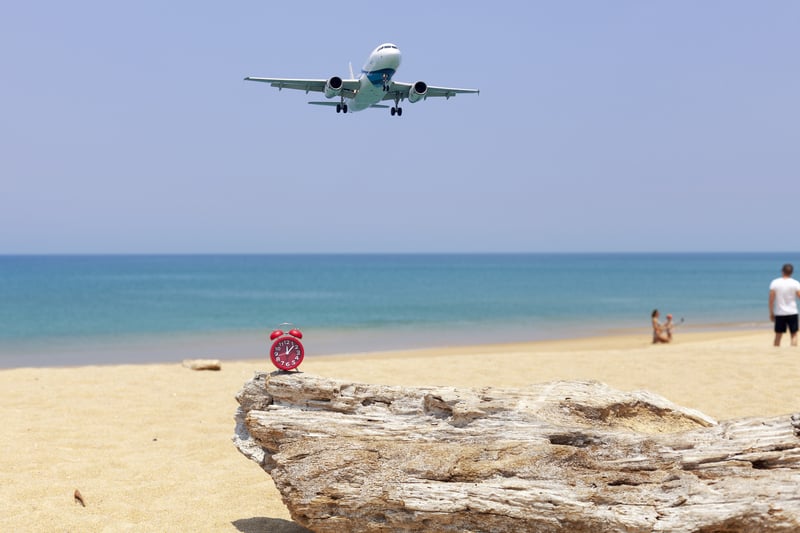
Yes, it’s safe to snorkel before going on an airplane. Since you’re not inhaling any compressed air there is no risk of decompression sickness.
This is not the case when you go scuba diving. In this article we explain exactly why that is, and why waiting at least 24 hours is necessary.
Surface Air Pressure
In daily life we breathe the air that surrounds us. At home, at work, anywhere really. Snorkeling is not different. We stay at the ocean surface and breathe the air above. This air is not different from the air on the beach. The same goes for swimming, visiting the beach bar, walking along the shore, you name it. Even though we use a snorkel, and even though we breathe through it’s tube, the air is still the same.
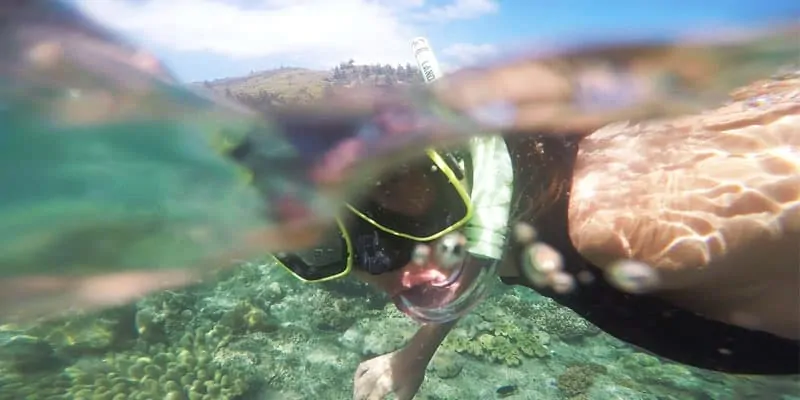
Compressed Air
If you want to stay below the water for a longer period of time, you’ll need to take some air with you. This is the case when you go scuba diving. We need a whole lot of air, but it’s impossible to bring a gigantic balloon in order to survive underwater.
The atmospheric pressure of planet Earth is what we are used to. However, gasses can be compressed so they fit into smaller areas. When scuba diving, you bring a tank with you that contains compressed air. It allows you to stay underwater for a decent amount of time since there’s a lot of “squeezed” air in your tank.
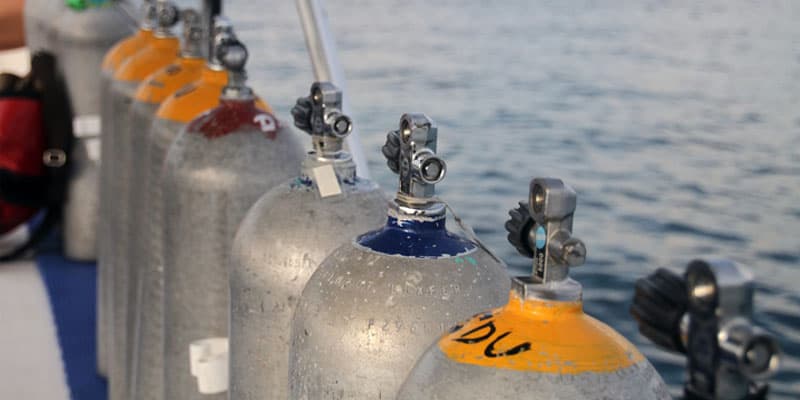
Nitrogen
Nitrogen makes up for 78.09% of air volume. It’s known as an inert gas, which means it doesn’t undergo chemical reactions. We need nitrogen for a lot of reasons, for instance to make amino acids.
When we go scuba diving we are surrounded by higher pressures. These pressures “push” the nitrogen into our tissues. When we slowly ascend back to the ocean surface (which we should and do according to the guidelines), the pressure will decline. The nitrogen will leave our bodies through our lungs.
Ascending too fast however is where it get’s dangerous. In that case, nitrogen will form bubbles. These bubbles can damage our tissues and nerves. If the bubbles make it to your brain the effects could be much worse, like paralysis or even death.
Airplanes
Once you board an airplane you’ll be traveling somewhere around 6-7 miles in altitude. The atmospheric pressure decreases the higher you go, in other words, air pressure goes down. The cabin of an airplane is pressurized accordingly. This pressure is lower than the air pressure at sea level.
Usually the pressure in the cabin is equivalent to air pressures at 6000-8000 feet in altitude. This means that remaining nitrogen has another chance to bubble. Just like returning to the ocean surface after scuba diving, going on an airplane involves pretty much the same mechanism.
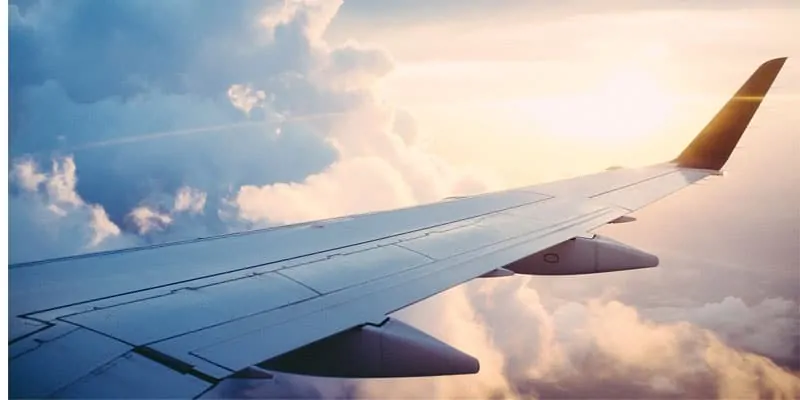
So When Can You Fly?
If you understand the things we just mentioned, you should know why not to board an airplane after scuba diving. So when is it safe to do so?
The Divers Alert Network, also known as DAN, suggest to at least wait 12 hours after a single dive. If you enjoyed multiple dives on the same day, you should wait at least 18 hours. In case you had to make decompression stops, whether it was a single dive or not, it’s advised to wait even longer than 18 hours. The U.S. Air Force tells people to at least wait 24 hours.
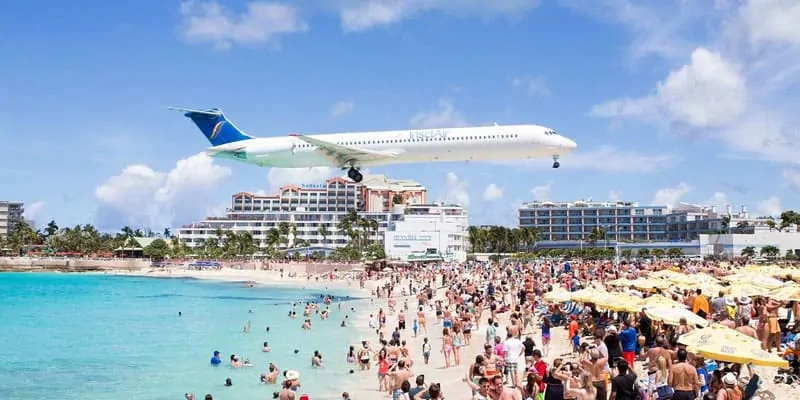
Can You Snorkel After Flying?
Yes, you can snorkel after flying, just like you can go swimming. The air you breathe when snorkeling is at atmospheric pressure. It doesn’t matter if you wear a regular mask with a separate snorkel or one of the trending full face snorkel masks.
Final Thoughts
It is safe to go on an airplane after snorkeling. It is also safe to snorkel after flying. You breathe air at the atmospheric pressure, just like you do when swimming or taking a walk.
If you go scuba diving you should at least wait 24 hours before flying. People have different opinions about the exact duration, so make sure you do your own research.
If you are interested to bring snorkel gear in carry-on luggage, feel free to read the article. Another topic we suggest is snorkeling when pregnant.
